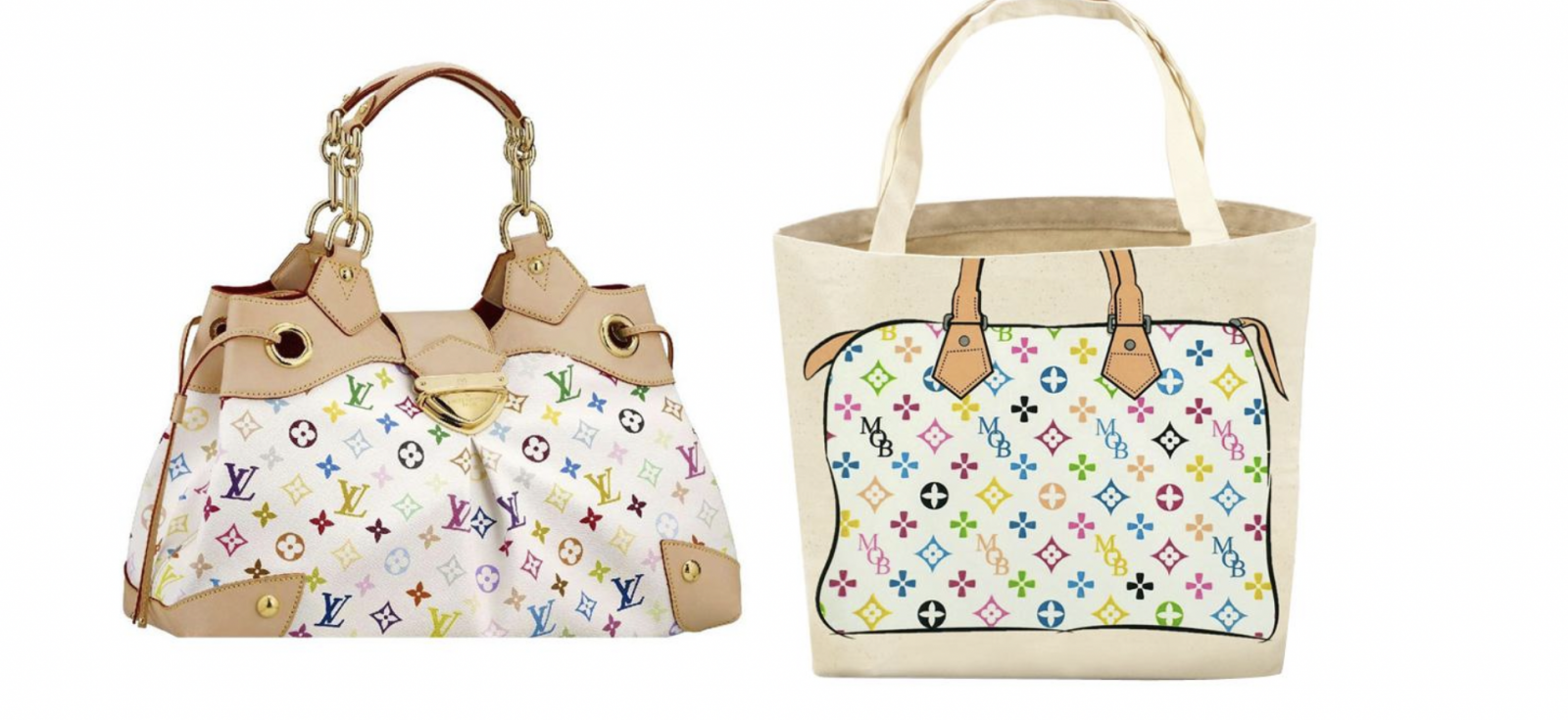Case Briefs
Case(s): Louis Vuitton Malletier, S.A. v. My Other Bag, Inc., 1:14-cv-03419 (SDNY)
Facts: Louis Vuitton (“LV”) sued My Other Bag, Inc. (“MOB”) in the United States District Court for the Southern District of New York in 2014 for claims of trademark infringement, trademark dilution, and copyright infringement. MOB sells canvas tote bags, priced between $30 and $55, with the words “My Other Bag …” displayed on one side, and a drawing of a well-known designer handbag, including Balenciaga, Proenza Schouler, Yves Saint Laurent, Celine, and LV bags, on the other side. The “My Other Bag …” text is a play on the well-known “my other car …” novelty bumper stickers. In this case, MOB placed drawing of LV handbags with simplified colors, graphic lines, and patterns resembling the famous LV Toile Monogram, Monogram Multicolore, and Damier designs on one side of its tote bags. MOB altered the famous designs by replacing the interlocking “LV” with an interlocking “MOB” or “My Other Bag.” MOB marketed its bags as different from LV, stating that its bags were “[e]co-friendly, sustainable tote bags playfully parodying the designer bags we love, but practical enough for everyday life.”

District Court Decision
The district court granted summary judgment for MOB on LV’s trademark infringement, trademark dilution, and copyright infringement claims, reasoning that MOB’s tote bags were “an obvious attempt at humor” and “not likely to cause confusion or the blurring of the distinctiveness of LV’s marks.” The court reinforced this conclusion by stating that MOB’s parody should be treated by LV as a compliment that will likely “enhance the distinctiveness of the famous brand.” The court’s analysis for each of the three claims is as follows …
Trademark Dilution – LV argued that MOB was liable for trademark dilution by blurring under the Lanham Act. To succeed on a dilution claim under federal law, a plaintiff “must prove (1) that the trademark is truly distinctive or has acquired secondary meaning, and (2) a likelihood of dilution . . . as a result of ‘blurring.’” The court concluded that MOB’s bags were protected as fair use since the bags constitute parody –something that shows a consumer that someone is poking fun at a trademark or its owner. “My Other Bag …” serves as a joke by humorously suggesting that the owner’s other bag is a real LV bag. That joke, along with the cartoonish drawings of LV bags, and the care-free use intended for the tote bag, all lent itself to the court’s conclusion that MOB’s totes are a parody and do not dilute the LV marks.
The court further concluded that, even if MOB’s use did not constitute fair use, MOB would still be entitled to summary judgment “because the tote bags pose no danger of impairing the distinctiveness of [LV]’s marks.”
Trademark Infringement – The court evaluated whether there was a likelihood of confusion and applied the eight-factor balancing test from Polaroid Corp. v. Polarad Elecs. Corp. The eight factors are: (1) strength of the trademark; (2) similarity of the marks; (3) proximity of the products and their competitiveness with one another; (4) evidence that the senior user may “bridge the gap” by developing a product for sale in the market of the alleged infringer’s product; (5) evidence of actual consumer confusion; (6) evidence that the imitative mark was adopted in bad faith; (7) respective quality of the products; and (8) sophistication of consumers in the relevant market.
For many of the same reasons articulated for the dilution claim, the court concluded that LV’s infringement claim failed, namely because consumers are not likely to be confused by the obvious differences between LV’s bags and MOB’s bags (the latter of which mimick LV’s marks), the lack of market proximity between the two companies’ offerings, and the lack of evidence showing consumer confusion.
Copyright Infringement – The court provided that MOB had a strong claim to fair use under the Copyright Act, and thus, does not constitute infringement. The court assessed the four fair use factors under 17 U.S.C. § 107 and concluded that they either weigh in MOB’s favor or are irrelevant. Therefore, MOB’s parodic totes were deemed fair use and did not constitute copyright infringement.
Second Circuit Appeal & Petition for Certiorari
LV appealed to the United States Court of Appeals for the Second Circuit, and on December 22, 2016, the Second Circuit affirmed judgment in favor of MOB, affirming the district court’s determination on all three claims. Following the Second Circuit’s decision, LV sought a hearing en banc, which was denied in February 2017. Subsequently, LV, seeking review by the Supreme Court, filed a petition for certiorari, writing that “[t]he Second Circuit’s decision … vastly expands the fair-use exception beyond the narrow bounds that Congress intended, leaving famous marks vulnerable to widespread dilution through the production of imitation products marketed under the guise of ‘parody.’” The Supreme Court denied certiorari in October 2017.
Attorney’s Fees
After the string of decisions in favor of MOB, MOB filed a motion in the SDNY asserting that it is entitled to attorneys’ fees and other related costs initially amounting to $802,939.05 in accordance with federal copyright and trademark law. However, MOB’s arguments were not convincing, and district court Judge Jesse Furman declined to award fees and costs to MOB. On appeal in March 2019, the Second Circuit affirmed the district court’s decision to side with LV regarding the attorneys’ fees dispute.